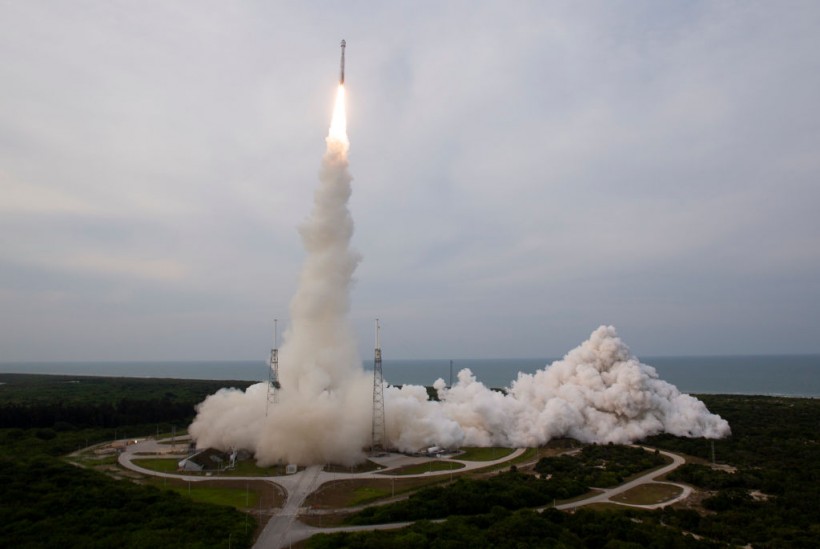A Minotaur II+ rocket exploded following a launch on a test mission from Vandenberg Space Force Base. It exploded about 11 seconds after liftoff, according to a press release.

(Photo : Joel Kowsky/NASA via Getty Images)
CAPE CANAVERAL, FL - MAY 19: In this handout photo provided by NASA, a United Launch Alliance Atlas V rocket with Boeings CST-100 Starliner spacecraft launches from Space Launch Complex 41 on May 19, 2022 in Cape Canaveral, Florida. Boeings Orbital Flight Test-2 (OFT-2) is Starliners second uncrewed flight test and will dock to the International Space Station as part of NASA's Commercial Crew Program. OFT-2 launched at 6:54 p.m. ET, and will serve as an end-to-end test of the system's capabilities.
Fortunately, there were no injuries reported. There was also no debris as they were contained in the immediate vicinity of the launch pad. An investigative review is ongoing to determine the cause.
"We always have emergency response teams on standby prior to every launch," Col. Kris Barcomb, Space Launch Delta 30 vice commander said, according to Space.com.
The Failed Launch
The launch was supposed to support the development of a re-entry vehicle for the US Air Force, Mk21A that will eventually, ride on an LGM-35A Sentinel Intercontinental Ballistic Missile (ICBM) that is in the works.
Based on CBS News, "The test launch was intended to demonstrate preliminary design concepts and relevant technologies in operationally realistic environments," according to Air Force Nuclear Weapons Center officials.
The Sentinel program is meant to replace the Minuteman III ICBM as most of its fundamental infrastructure still uses the original equipment. Once ready, the new Sentinel ICBMs will replace the 400 Minuteman III ICBMs at Air Force bases in Wyoming, Montana, and North Dakota.
Their plan is to upgrade the launch facilities, missile alert, and communication systems to support the new Sentinel weapon system.
The Causes of Rocket Failures
In the past, there have been a lot of failed launches. While these failed launches had a lot of different causes, failures seem to come from two main areas: technical and human error.
Technical Errors
While there are many reasons for technical failures, the most common are problems in the missile and rocket itself. These include engines and guidance.
Problems with the missile and rocket itself often arise from the beginning of the design process. An engineer must first decide what type of rocket they are going to use. They then have to decide the fuel, and the number of stages. The final choice is the type of engine that will be used.
Once the overall design is chosen, the engineers have to begin designing the individual parts of the rocket. This includes the fuel tanks, engines, and guidance system. To make sure that all of the designs are compatible and work together, there needs to be a lot of trial and error.
The engineers must also do stress tests and try to recreate events that are likely to happen, like turbulence or a sudden stop. Then they must make sure that the rocket can withstand these events.
Human Errors
Humans make a lot of mistakes that lead to failed launches, especially the launch personnel. This could be from issues with the training, and understanding of the launch.
Many times, the launch personnel fail to follow the proper procedure simply based on a misunderstanding or not understanding it at all.
As a general rule, human errors tend to occur when either the training is inadequate, or the personnel is not competent enough to understand the procedures.
Related Article: Astra Fails to Launch NASA CubeSat: Upper Stage Flew Out of Control After Detaching
This article is owned by TechTimes
Written by April Fowell





